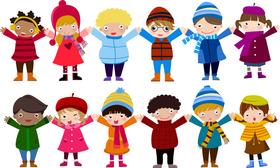Public schools are no longer focusing on just reading, writing, and arithmetic. Hoping to improve the social environment on campus, many school leaders are experimenting with innovative positive behavior programs.
Every day, more than 25 million middle and high school students walk through the hallways and classrooms of public schools across the country. According to Iris Educational Media (IEM), break times, lunch times, and moments between classes create the campus climate – and the students’ behavior ultimately impacts whether the environment is safe and respectful or intimidating and negative.
Public school behavior programs encourage students to build healthy relationships, develop positive behavior, and foster a shared responsibility amongst the community. All of these factors contribute to a more productive campus environment, as well as better academic achievement for individual students.
This video explains positive support.
Demanding a Change: Why Schools Need Positive Behavior Strategies
As IEM further reveals, problems with negative student behavior occur at all grade levels and can cause serious negative impacts on each student’s development and confidence. In fact, in specifically examining the pre-teen and high school years, the National Center for Education Statistics has reported that nearly 5 percent of all 12 to 18-year-olds have avoided school-related functions due to feelings of fear and/or apprehension.
While negative behaviors undoubtedly impact a school’s overall climate and each student’s comfort level, some studies even suggest that negative student behavior is one of the leading factors contributing to low teacher retention rates, as many teachers report leaving the profession due to struggles with difficult students.
Exploring Positive Behavioral Strategies
Because negative behavioral problems can contribute to an array of school-wide detriments, researchers have developed systematic strategies that can boost student behavior and achievement.
For example, the University of Oregon, one of the leading universities exploring concepts in positive behavior models, has been engaging in various case studies and in-school analyses of their proposed positive behavior strategies. As program leaders assert, ‘“Investing in the social behavior of students is central to achieving academic gains.’” Basing their research on this foundational belief, the university has engaged in two university-led studies to provide insights into the influence and effects of positive reinforcement behavioral programs for students of various ages and grade levels. Known as School-Wide Positive Behavior Support (SWPBS), the University of Oregon's two studies have evaluated the impact of positive behavioral methodologies to report the following results:
- The first study, examining the influence of SWPBS with 3rd-grade students in Illinois and Hawaii, found that SWPBS methods improved student mastery in reading when compared with students in control schools (based on state-wide reading assessments).
- The second study, exploring high school practices and methods for using SWPBS, found that SWPBS models were most effective when strongly encouraged by administrators, teachers, and students; a lack of commitment to the SWPBS methods resulted in less successful outcomes when compared with schools with a more shared agreement.
This TEDTalk explains how positive support works.
How Schools are Shifting Their Behavioral Practices
The EMSTAC, the Elementary and Middle Schools Technology and Assistance Center, has outlined core strategies for the successful implementation of positive behavior programs into school practices, including:
- Schools should develop positive behavioral teams to support the new strategies and practices.
- Parents, teachers, and administration should all be involved in the planning and implementation of behavioral strategies.
- Schools must work to develop a cohesive and shared behavior plan.
- Teachers and support staff must be provided with clear information and instructions to encourage positive strategies and results.
- Data should be reviewed and assessed to verify students’ positive progress.
- The behavioral plan should be modified to meet the ongoing and evolving challenges of students/behavior problems.
- Leaders, teachers, and parents should receive and provide recommendations regarding individual behavior plans for a student’s unique circumstances.
As behavior programs become more popular amongst public schools, campuses should become a friendlier, healthier, and more productive environment that encourages positive academic and social development.
The Minnesota Department of Education offers the following information about PBIS:
""Why does PBIS work?
Research shows that when a school environment is positive and predictable, students feel safer, have better academic performance, higher test results and make better behavior choices. Schools also show a gain in instructional time, reduction in out of school suspensions and discipline referrals and show a decrease in referrals to Special Education."
"Is it a curriculum?
No. PBIS is not a curriculum, but a process of planning and problem solving that includes direct teaching of social behaviors like academics. The basic PBIS approach is to use proactive, research-based strategies to teach clearly defined behavioral expectations. Most importantly, it establishes ongoing behavior supports that can be used by ALL students, staff, volunteers, parents and community members.
"Can parents be involved?
Yes! Research shows that parent involvement in a child’s school experience greatly increases their chances for academic success, positive behavior, higher self-esteem, better attendance and greater motivation. Parents are key sources of information about their child, are their child’s first teachers, and have strengths and interests that can contribute to the educational process. When schools and families work together to support learning, children tend to succeed not just in school, but also throughout life. (National PTA, n.a.; Newman L. 2005; Henderson and Berla, 1997)."
Questions? Contact us on Facebook. @publicschoolreview











